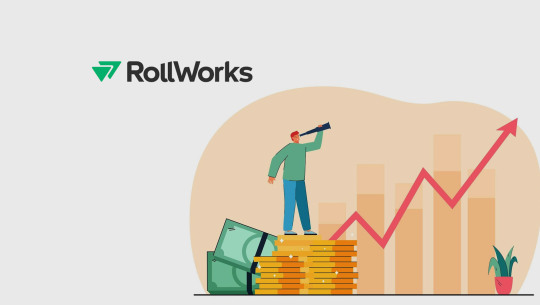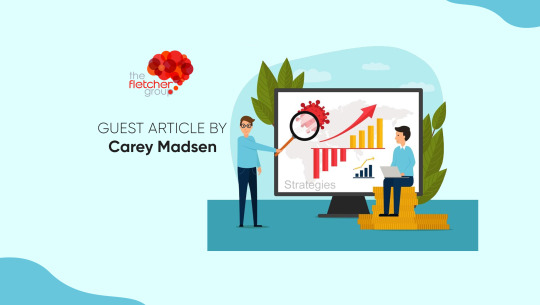#nextrole
Explore tagged Tumblr posts
Text
Freelance Recruitment Professional / Business Development Manager / HR Recruiter
Job title: Freelance Recruitment Professional / Business Development Manager / HR Recruiter Company: nextRoles Job description: . Collaborate with internal teams to deliver high-quality recruitment services and achieve business objectives. Monitor industry… Expected salary: Location: Toronto, ON Job date: Sun, 05 Jan 2025 23:38:32 GMT Apply for the job now!
0 notes
Text
B2B vs. B2C – It is Not Always About Who’s Buying But How You’re Selling

Did you know that the global B2B eCommerce market was valued at a staggering US$20.4 trillion in 2022, which is over five times that of the B2C market? This statistic highlights the dynamic and competitive nature of today’s business environment. In the wake of these developments, it is important to focus on an overlooked aspect of business strategy, i.e., the selling approach.
A common misconception is that B2B and B2C are solely about the buyer’s identity. The key difference lies in how you are selling. Let’s explore this interesting topic further.
Comparing B2B and B2C Approaches
B2B, or Business-to-Business, refers to transactions between two businesses. It involves selling products or services from one business to another. On the other hand, B2C, or Business-to-Consumer, involves transactions between a business and individual consumers. It is the traditional retail model where businesses sell products or services directly to the end consumer.BasisBusiness to Business (B2B)Business to Customer (B2C)Sales CycleB2B transactions often involve longer sales cycles due to higher costs, more stakeholders, and longer decision-making processes.B2C purchases usually have shorter sales cycles as they are less costly and involve fewer decision-makers.RelationshipB2B focuses on building long-term relationships with other businesses, as repeat business is often crucial.B2C tends to focus on attracting and converting customers for individual sales.Decision MakingB2B purchases are often rationally driven, based on the value and return on investment.B2C purchases can be emotionally driven, based on desires or perceived needs.MarketingB2B marketing is often information-heavy, focusing on features, benefits, and ROI.B2C marketing is often emotionally driven, focusing on benefits and lifestyle enhancements.Pricing StrategyB2B pricing is often negotiable and may involve contracts.B2C pricing is usually fixed, with less room for negotiation.
B2B and B2C: The Shift in Perspectives
In the evolving business landscape, the distinction between B2B and B2C is not just about who’s buying. The real difference lies in how you’re selling. This shift in perspective is transforming the way businesses operate. Some of the crucial factors leading to this shift include:
Digital Transformation: The advent of digital technology has revolutionized the way businesses operate, making it easier to reach out to customers and understand their needs.
Customer Expectations: Today’s customers, whether businesses or individuals, expect personalized experiences. This has led to a shift in selling strategies to meet these expectations.
Data-Driven Decisions: The use of data analytics in decision-making has enabled businesses to tailor their selling strategies based on customer behavior and preferences.
Social Media Influence: Social media platforms have become a powerful tool for businesses to engage with their customers, influencing how products and services are sold.
Read More: SalesTechStar Interview with Laura Zwahlen, Chief Revenue Officer at NextRoll
How do Selling Strategies Differ in B2B and B2C?
Selling strategies in B2B and B2C differ significantly due to the nature of their respective markets. While B2B selling is about demonstrating tangible value, B2C selling is about creating an emotional connection.
In B2B, the focus is on building relationships and providing value. The sales process is often consultative, involving demonstrations of how the product or service can solve a problem or improve efficiency. For example, a B2B software company might offer personalized demos and detailed case studies to show potential clients the value of their product.
B2C selling strategies are geared towards appealing to the emotions and desires of individual consumers. They often involve creating a brand story that resonates with consumers and showcasing how the product or service can enhance their lifestyle. For instance, a B2C clothing brand might use visually appealing advertisements and influencer partnerships to reach its target audience.
The Impact of Selling Strategies on Business Success
Effective selling strategies are the backbone of any successful business, whether it’s B2B or B2C. They not only help attract and retain customers but also play a crucial role in shaping the brand’s image. In B2B, a well-crafted selling strategy can lead to long-term partnerships, repeat business, and high-value contracts. In B2C, it can result in increased customer loyalty, higher sales volumes, and strong brand recognition.
Rubik’s Global Expansion: The Rubik’s Cube, invented by Ernő Rubik in 1974, was initially called the ‘Magic Cube’. It was initially marketed in Hungary, but its popularity exploded when it was showcased at international toy fairs and subsequently picked up by the Ideal Toy Company. Its success demonstrates the power of a unique product coupled with effective B2B strategies.
Walmart: Walmart, a giant in the B2C sector, has made significant strides in enhancing its customer experience. One such initiative is their enhanced Marketplace Returns program. This program simplifies the return process for customers, making it hassle-free and seamless. By focusing on customer satisfaction and implementing a seamless return experience, Walmart has increased customer loyalty and made them repeat purchasers.
Read More: SalesTechStar Interview with Laura Zwahlen, Chief Revenue Officer at NextRoll
Conclusion
The distinction between B2B and B2C is not just about who is buying but how you are selling. By understanding this shift in perspective and adapting selling strategies accordingly, businesses can drive success in today’s dynamic market. Remember, it is not just about reaching the customer; it is about resonating with them.
0 notes
Text
Ad Tech Software Market is set to Fly High Growth in Years to Come
Advance Market Analytics released a new market study on Global Ad Tech Software Market Research report which presents a complete assessment of the Market and contains a future trend, current growth factors, attentive opinions, facts, and industry validated market data. The research study provides estimates for Global Ad Tech Software Forecast till 2027*.
The global ad tech software market is expected to witness significant growth during the forecast period of 2019-2020, according to the AMA study. This is owing to rising global advertisement investments and increasing demand for online advertisement due to rising digital marketing activities. Moreover, the digital transformation of different industry verticals in order to transform their marketing and operational processes in order to remain competitive in the market is another major factor aiding into the growth of the market.
Key Players included in the Research Coverage of Ad Tech Software Market are
Adoppler LLC (Belarus)
Criteo (France)
NextRoll, Inc. (United States)
Google LLC (United States)
MediaMath, Inc. (United States)
Adobe (United States)
AppNexus (United States)
The Trade Desk (United States)
InMobi (India)
Amobee, Inc. (United States)
Adform (Denmark) What's Trending in Market: Increasing Adoption of Online Advertisement
Challenges: The Threat of Advertisement Fraud
Opportunities: Digital Transformation of Industry Verticals
Growing Adoption of Artificial Intelligence In Advertisment Technologies
Market Growth Drivers: Rising Global Advertisement Investments
Increasing Demand for Online Advertisement Due to Rising Digital Marketing Activities
The Global Ad Tech Software Market segments and Market Data Break Down by Application (Affiliate Marketing, Search Advertising, Social Media Marketing, Email Marketing, Content Marketing, Website/Landing Page, Paid Display, Search Engine Optimization, Others), Enterprise Size (Small & Medium Enterprises, Large Enterprises), Industry Verticals (BFSI, Retail, IT & Telecom, Media & Entertainment, Automotive & Transportation, Government, Others), Deployment (On-Premise, Cloud-based) To comprehend Global Ad Tech Software market dynamics in the world mainly, the worldwide Ad Tech Software market is analyzed across major global regions. AMA also provides customized specific regional and country-level reports for the following areas. • North America: United States, Canada, and Mexico. • South & Central America: Argentina, Chile, Colombia and Brazil. • Middle East & Africa: Saudi Arabia, United Arab Emirates, Israel, Turkey, Egypt and South Africa. • Europe: United Kingdom, France, Italy, Germany, Spain, Belgium, Netherlands and Russia. • Asia-Pacific: India, China, Japan, South Korea, Indonesia, Malaysia, Singapore, and Australia. Presented ByAMA Research & Media LLP
0 notes
Text
NextRoll’s Graham Byrne on empathetic leadership and adapting to a completely flexible work model - Everythingfair
At Owl Labs, we facilitate hybrid-friendly work experiences with our intelligent video conferencing and collaboration tools. We’ve sat down with workplace leaders around the world about how hybrid work fits into the future of work, and how to best support employees during major changes. Subscribe to hear from more innovative leaders and look out for new conversations in our Hybrid Leadership…

View On WordPress
0 notes
Text
Ad Tech Software Market to Eyewitness Massive Growth by 2027
Latest Report Available at Advance Market Analytics, “Ad Tech Software Market” provides pin-point analysis for changing competitive dynamics and a forward looking perspective on different factors driving or restraining industry growth.The global Ad Tech Software market focuses on encompassing major statistical evidence for the Ad Tech Software industry as it offers our readers a value addition on guiding them in encountering the obstacles surrounding the market. A comprehensive addition of several factors such as global distribution, manufacturers, market size, and market factors that affect the global contributions are reported in the study. In addition the Ad Tech Software study also shifts its attention with an in-depth competitive landscape, defined growth opportunities, market share coupled with product type and applications, key companies responsible for the production, and utilized strategies are also marked.Some key players in the global Ad Tech Software market are:
Adoppler LLC (Belarus)
Criteo (France)
NextRoll, Inc. (United States)
Google LLC (United States)
MediaMath, Inc. (United States)
Adobe (United States)
AppNexus (United States)
The Trade Desk (United States)
InMobi (India)
Amobee, Inc. (United States)
Adform (Denmark) The global ad tech software market is expected to witness significant growth during the forecast period of 2019-2020, according to the AMA study. This is owing to rising global advertisement investments and increasing demand for online advertisement due to rising digital marketing activities. Moreover, the digital transformation of different industry verticals in order to transform their marketing and operational processes in order to remain competitive in the market is another major factor aiding into the growth of the market.What's Trending in Market: Increasing Adoption of Online Advertisement
Challenges: The Threat of Advertisement Fraud
Market Growth Drivers: Rising Global Advertisement Investments
Increasing Demand for Online Advertisement Due to Rising Digital Marketing Activities
The Global Ad Tech Software Market segments and Market Data Break Downby Application (Affiliate Marketing, Search Advertising, Social Media Marketing, Email Marketing, Content Marketing, Website/Landing Page, Paid Display, Search Engine Optimization, Others), Enterprise Size (Small & Medium Enterprises, Large Enterprises), Industry Verticals (BFSI, Retail, IT & Telecom, Media & Entertainment, Automotive & Transportation, Government, Others), Deployment (On-Premise, Cloud-based)
Presented By
AMA Research & Media LLP
0 notes
Photo

#AllisonSemmes / #SOULtheStaxMusical: our previous guest is playing Carla Thomas / Jean Knight at the #Baltimore @centerstagemd, now thru June 10th. When we met the talented @ladysemmes, she was headlining as #DianaRoss in the national tour of #MotownTheMusical. #ICYMI: watch our previous interview at SIDEWALKSTV.COM #role #nextrole #career #stage #acting #theatre #onstage #performer #baltimorecenterstage #talented #singer #actress #lovely #broadwaystar #broadway
#allisonsemmes#baltimorecenterstage#lovely#baltimore#acting#career#motownthemusical#singer#role#actress#soulthestaxmusical#nextrole#performer#broadwaystar#onstage#icymi#broadway#theatre#stage#dianaross#talented
2 notes
·
View notes
Text
With Enhanced Reporting Capabilities, RollWorks Gives HubSpot Users More Insights into Customer Behavior Over Time
With Enhanced Reporting Capabilities, RollWorks Gives HubSpot Users More Insights into Customer Behavior Over Time
Account-based marketing leader now provides a lookback period of up to 90 days Account-based marketing platform RollWorks, a division of NextRoll, strengthened its reporting capabilities for HubSpot users. The new capabilities give B2B marketers more insights into the trends of their customers’ behaviors and activities. They also have more flexibility to use these insights in workflows they set…
View On WordPress
0 notes
Text
New RollWorks Survey Confirms Marketers Rely on ABM
New RollWorks Survey Confirms Marketers Rely on ABM
Targeting, advertising, and other forms of ABM engagement comprise about 90% of B2B marketers’ priorities Account-based marketing platform RollWorks, a division of NextRoll, announced the results of a six-month survey designed to determine ongoing B2B marketer priorities and challenges. New research reveals that marketers rely heavily on ABM to increase ROI and achieve pipeline and revenue…

View On WordPress
0 notes
Link
Account-based marketing platform RollWorks, a division of NextRoll, today announced the launch of Journey Events for Salesforce to help marketing and sales teams visualize how their activities drive account progression and turn data into actionable insights. This integration builds on RollWorks’ breadth of capabilities to empower B2B sales teams—earlier this month, the company launched RollWorks Journey Events for HubSpot, which brings the power of buyer journey stage data directly within CRM.
0 notes
Link
With New Sales Insights Tool, RollWorks Helps HubSpot® Users Turn Marketing Customization into More Powerful Sales Impact
0 notes
Text
4 Strategies to Unify Sales and Marketing for Sustained Growth

Sales professionals today are up against rising customer acquisition costs and a highly competitive environment, making prospecting increasingly difficult. Improving the alignment between sales and marketing is one crucial strategy to overcome these obstacles. Yet, sales and marketing teams often work in silos or only communicate on an ad hoc basis, resulting in higher costs, longer sales cycles, and lower conversion rates that stifle a business’s growth potential.
More than ever, sales and marketing teams need these four key strategies to unify their work and establish robust communication channels, routines, and joint planning sessions for enhanced collaboration. By synchronizing strategies from brand awareness to lead gen to closing deals and retaining customers, both teams can meet their objectives and work towards shared success and business growth together.
1. Align On Shared Goals and KPIs
A pivotal step in sales and marketing alignment is collaborating on shared goals, including KPIs that are crucial for both teams. This includes setting joint targets for customer acquisition, revenue, lead generation, and retention metrics. It’s important to work together on establishing criteria for marketing qualified leads (MQLs) and sales qualified leads (SQLs), metrics that are likely independently on each team’s radar. This helps ensure both teams can take joint responsibility and credit for the sales process and outcomes.
Lead quality will improve when marketing performance is tied to sales conversions. Similarly, your sales team can leverage takeaways from marketing campaigns to better resonate with its leads and understand their decision-making process, which can help improve the lead nurture process. Tasks may be divided along departmental lines, but working toward shared KPIs and reporting outcomes to the C-suite reinforces joint accountability over the sales cycle and results.
2. Collaborate On Buyer Personas
As a sales leader, you and your team know better than anyone that understanding your buyers is paramount. And that work never ends, as there is plenty of data to capture, analyze, and work from at each level of the sales funnel. This is where marketing and sales alignment can really shine. Whether your business is B2B or B2C, both teams should understand the total addressable market (TAM) or marketable universe and work together on co-creating detailed buyer personas. Working together on buyer personas benefits marketing, too, as they need accurate, detailed information to get their campaign targeting and messaging right—and there’s little room for error as lead acquisition costs continue to rise.
To create these profiles, your sales team should work closely with marketing to combine intelligence and distill the prospects’ firmographics, demographics, pain points, decision-making habits, preferred content, online behavior and more at every stage in the buyer journey.
Both teams bring something different to the table here. Sales colleagues will contribute valuable qualitative data from direct customer feedback and on-the-ground insights, while marketing will have quantitative data from social, website and content engagements and primary targeted research campaigns or secondary research. This joint effect will allow you to focus on the buyer segments most likely to convert and identify personalization strategies to attract and nurture the right leads effectively.
Read More: SalesTechStar Interview with Laura Zwahlen, Chief Revenue Officer at NextRoll
3. Champion Sales Enablement
Sales enablement is another area where marketing and sales can collaborate. Typically, sales enablement materials are created by the marketing team as a way to highlight a brand’s valuable owned content and media wins. Marketing teams will package these up as easy-to-personalize sample emails or social media posts with trackable links driving back to the website. The sales team can use the template as an engagement point for prospects or to help maintain existing customers.
If your marketing team already provides sales enablement materials, champion them and encourage your colleagues to use them. If not, talk to your marketing team about the potential. Emphasize how these tools can help achieve mutual goals by driving website traffic and boosting engagement with marketing materials while also enhancing the sales and nurture process.
4. Prioritize Ongoing Collaboration
The overarching lesson to be learned is that the work between sales and marketing should never stop. You should have continuous feedback loops to discuss progress from high-level goals to specific campaigns, leveraging the unique vantage point that both teams have in the sales funnel.
For example, when kicking off a content campaign, your sales team can advise on certain messaging that resonates well with that audience group to help guide the content creation. Then, once the campaign is live, you can share timely feedback on the quality of leads, how the nurture process is going, and any pain points that have been shared by the prospects. Marketing will be able to share insights into market trends, customer preferences and helpful data on audience engagement.
0 notes
Text
Ad Tech Software Market is set to Fly High Growth in Years to Come
Advance Market Analytics released a new market study on Global Ad Tech Software Market Research report which presents a complete assessment of the Market and contains a future trend, current growth factors, attentive opinions, facts, and industry validated market data. The research study provides estimates for Global Ad Tech Software Forecast till 2027*. The global ad tech software market is expected to witness significant growth during the forecast period of 2019-2020, according to the AMA study. This is owing to rising global advertisement investments and increasing demand for online advertisement due to rising digital marketing activities. Moreover, the digital transformation of different industry verticals in order to transform their marketing and operational processes in order to remain competitive in the market is another major factor aiding into the growth of the market. Key Players included in the Research Coverage of Ad Tech Software Market are
Adoppler LLC (Belarus)
Criteo (France)
NextRoll, Inc. (United States)
Google LLC (United States)
MediaMath, Inc. (United States)
Adobe (United States)
AppNexus (United States)
The Trade Desk (United States)
InMobi (India)
Amobee, Inc. (United States)
Adform (Denmark) What's Trending in Market: Increasing Adoption of Online Advertisement
Challenges: The Threat of Advertisement Fraud
Opportunities: Digital Transformation of Industry Verticals
Growing Adoption of Artificial Intelligence In Advertisment Technologies
Market Growth Drivers: Rising Global Advertisement Investments
Increasing Demand for Online Advertisement Due to Rising Digital Marketing Activities
The Global Ad Tech Software Market segments and Market Data Break Down by Application (Affiliate Marketing, Search Advertising, Social Media Marketing, Email Marketing, Content Marketing, Website/Landing Page, Paid Display, Search Engine Optimization, Others), Enterprise Size (Small & Medium Enterprises, Large Enterprises), Industry Verticals (BFSI, Retail, IT & Telecom, Media & Entertainment, Automotive & Transportation, Government, Others), Deployment (On-Premise, Cloud-based) To comprehend Global Ad Tech Software market dynamics in the world mainly, the worldwide Ad Tech Software market is analyzed across major global regions. AMA also provides customized specific regional and country-level reports for the following areas. • North America: United States, Canada, and Mexico. • South & Central America: Argentina, Chile, Colombia and Brazil. • Middle East & Africa: Saudi Arabia, United Arab Emirates, Israel, Turkey, Egypt and South Africa. • Europe: United Kingdom, France, Italy, Germany, Spain, Belgium, Netherlands and Russia. • Asia-Pacific: India, China, Japan, South Korea, Indonesia, Malaysia, Singapore, and Australia. Presented By
AMA Research & Media LLP
0 notes
Text
NextRoll’s Graham Byrne on empathetic leadership and adapting to a completely flexible work model -Jobsclub
At Owl Labs, we facilitate hybrid-friendly work experiences with our intelligent video conferencing and collaboration tools. We’ve sat down with workplace leaders around the world about how hybrid work fits into the future of work, and how to best support employees during major changes. Subscribe to hear from more innovative leaders and look out for new conversations in our Hybrid Leadership…

View On WordPress
0 notes
Photo

#SamHeughan: our previous guest will be co-starring with #VinDiesel in the #superhero film, #Bloodshot, according to @deadline. #ICYMI: we have several interviews with Sam about #Outlander and an early interview when he played #Batman on tour. Watch now at SIDEWALKSTV.COM. #casting #role #nextrole #job #career #actorslife #valiant #valiantexpandeduniverse #celebrity #interview #celebrityinterviews #guestnews #sidewalksguestnews
#outlander#valiant#sidewalksguestnews#casting#nextrole#celebrity#interview#icymi#bloodshot#role#job#samheughan#vindiesel#superhero#celebrityinterviews#career#actorslife#guestnews#valiantexpandeduniverse#batman
1 note
·
View note
Text
Europe MarTech Market 2021-2030: Opportunity Analysis, Industry Overview and Forecast
The compelling points of the Europe MarTech Market report published by Absolute Markets Insights. This report provides complete study of key leading market performers, their competitive outlook, segment-wise analysis of Europe MarTech, a study of market competitors, their consumer base, demand and supply chain scenario and competitive factors. The Europe MarTech product application, manufacturing cost, labor cost, raw materials, key developments and innovative strategies are listed in this report. Interest for Europe MarTech has expanded in recent decades because of development and headway in the Europe MarTech innovation. Rising interest from consumers, end-clients and industry specialists, in addition regions have coordinated the climb of Europe MarTech business. In-depth investigation of Europe MarTech helps in understanding the detailed market insights and future plans.
Top Key Players includes in this report: Adobe, Agent3, Artesian Solutions, Ltd., Brandworkz Ltd., BrightTALK, Concep, Cyance, dotdigital EMEA Limited, Episerver (Idio), Force24, Growth Intelligence (Pelucid Ltd), Lead Forensics, NextRoll, Inc., Oracle, Salesforce.com, SALESmanago, Spotler UK, ZEOTAP, amongst other market participants.
Browse the Full Information of this report: https://www.absolutemarketsinsights.com/reports/Europe-MarTech-Market-2020-–-2028-802
The European MarTech market was valued at US$ 35798.94 Mn in 2020 and is projected to grow at a CAGR of 16.4% over the forecast period. Increasing demand for personalized marketing solutions amongst enterprises, coupled with the proliferation of smart devices that is bringing more users online, thereby leading to a growth in usable data, is expected to drive the growth of the Europe MarTech market in the coming years. By 2030, the market is expected to be worth US$ 139476.43+ Mn.
Based on countries present in Europe, Germany accounted for the highest revenue in 2020. Rising demand for technology-driven marketing amongst the companies in Germany, especially the retail, and the banking, financial services and insurance sector, contributed heavily towards the 32.92% of the market share of Germany in the Europe MarTech market. However, the UK is expected to show the highest growth during the forecast years in the Europe MarTech market, with an expected CAGR of 17.9%.
Solutions segmented accounted for the highest revenue share in 2020. The rising demand for data-driven marketing solutions and software, especially cloud-based marketing technology tools, is a major reason for the larger share of solutions segment in the Europe MarTech market.
Europe MarTech Market:
By Offering
Solutions
Services
By Deployment
On-Premise
Cloud-based
By Application
Advertising and Promotion
Display and Programmatic Advertising
Search and Social Advertising
Native Advertising
Others
Email Marketing
Interactive Content Marketing
Optimization, Personalization and Testing
Digital Asset Management and Marketing Resource Management (MRM and DAM)
Product Information System
Search Engine Optimization (SEO)
Marketing Automation
Web Experience Management
Others
Call Analytics
Account-based Marketing
Webinars and Other Events
Social Media Monitoring
Loyalty and Referrals
Influencer Marketing
Reputation Management
CRM Systems
Chatbots
Proximity and IoT Marketing
Channel Partner and Local Marketing
Sales Automation
Affiliate Marketing
E-commerce Marketing
Others
Customer Data Platform
Compliance and Privacy
Marketing Analytics
Others
By Platform
Mobile
Web
By Organization Size
Small and Medium Enterprises
Large Enterprises
By Technology
Artificial Intelligence
Machine Learning
Augmented Reality and Virtual Reality
Internet of Things (IoT)
Others
By End Use Industry
Healthcare and Pharmaceuticals
Banking, Financial Services and Insurance
Information Technology and Telecommunications
Government
Education
Media and Entertainment
Retail & Consumer Goods
Travel and Hospitality
Transportation and Logistics
Manufacturing & Automotive
Food and Beverage
Others
By Region
North America
Europe
Asia Pacific
Middle East and Africa
Latin America
Contact Us:
Company: Absolute Markets Insights
Email Id: [email protected]
Phone: IN +917400242424, US +1-510-420-1213
Contact Name: Shreyas Tanna
Website: www.absolutemarketsinsights.com/
0 notes
Text
RollWorks Expands Journey Events, Further Enabling B2B Sellers to Leverage Vital Account Insights within CRM Solutions
RollWorks Expands Journey Events, Further Enabling B2B Sellers to Leverage Vital Account Insights within CRM Solutions
Account-based marketing platform RollWorks, a division of NextRoll, announced the launch of Journey Events for Salesforce to help marketing and sales teams visualize how their activities drive account progression and turn data into actionable insights. This integration builds on RollWorks’ breadth of capabilities to empower B2B sales teams—earlier this month, the company launched…

View On WordPress
0 notes